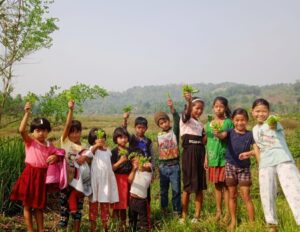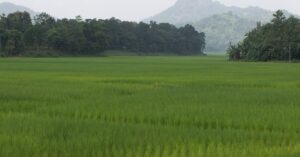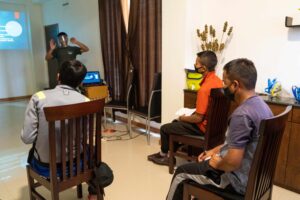Nestled in the verdant foothills of the Nokrek Range lies the peaceful village of Daribokgre. Lush green forests encircle this agrarian community, whose way of life is deeply intertwined with the rich resources of their surroundings.
The Daribokgre community is an active participating village of NESFAS and is part of its ongoing project, “Protection of Forests in Meghalaya by Adopting Participatory, Gender-Centric, and Equitable Approaches,” supported by The Nature Conservancy. Through this project, a team of NESFAS members and custodian farmers along with traditional healers delved into the community forests for documentation of different species of flora.
A staggering 41 food plants and a further 57 medicinal herbs were documented, which is not only a valuable record of the region’s biodiversity, but is also a platform for education and knowledge sharing. It is an important step in raising awareness about the critical role of biological diversity in maintaining food security and promoting sustainable agricultural practices.
Lainish T Sangma, a traditional healer, who also happens to be the Nokma, or the village head, shared an insightful discourse on the diverse applications of various medicinal plants. “We crush the leaves of the mint (menta) and apply it to the forehead as a relief to headaches. We did not have any medicines in our village, our forests gave us our medicines.” she shared. Additionally, she highlighted the use of two locally available plants-samkatchi and samguasu, in treating period cramps and chest/back discomfort, respectively.
Other varieties of wild edibles that were documented include- wild Colocasia, culantro, fish mint, wild berries, Rhynchotechum ellipticum, Stink vine, sour currant, buckwheat, spiny oleaster, toothache plant, Glory bower, mountain ebony, elephant foot yam etc.- all readily available from nature’s larder.
Documentation of these resources help in fostering inter-generational knowledge transfer, which in turn ensures that the unique traditional knowledge held by traditional healers and custodian farmers is not lost to time.
This project serves as a powerful testament to the intricate relationship between humans and nature. By documenting the region’s rich biodiversity and promoting knowledge sharing, the initiative paves the way for a more sustainable future, where both the land and its wisdom are cherished and protected for generations to come.



